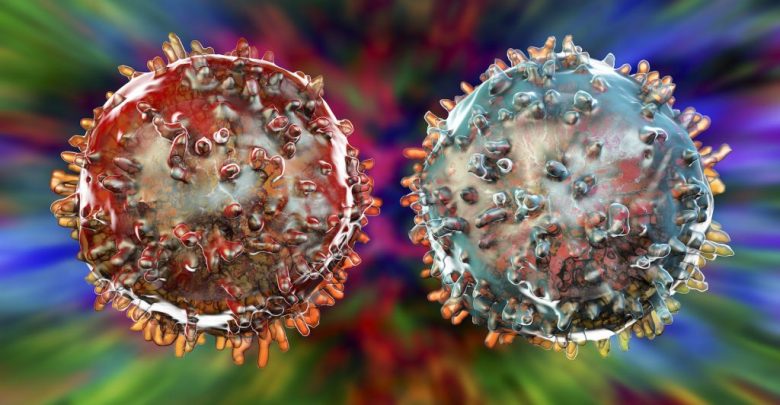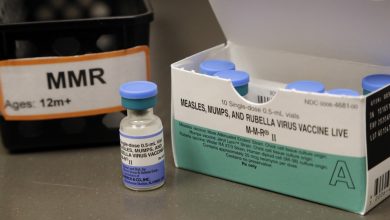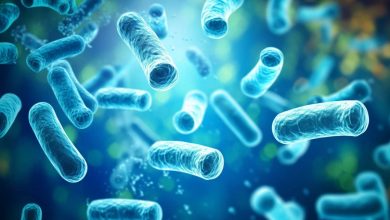
The discovery of dangerous mysterious cells in human body
اكتشاف خلايا غامضة خطرة في جسم الإنسان
Scientists have discovered a mysterious population of previously unknown cells lurking in the human body, according to a new study.
The enigmatic new cell type, called immune cell X, is a changeling that can act as two other cell types. And this rogue hybrid cell may trigger type 1 diabetes.
Scientists have long believed that hybrid cells like these could not exist. The population of these cells is likely tiny; perhaps less than 7 out of every 10,000 white blood cells, said study co-author Abdel-Rahim A. Hamad, associate professor of pathology at the Johns Hopkins University School of Medicine in Baltimore.
But they may play an outsize role in the development of autoimmunity.
“They are very rare, but we think they are very powerful,” Hamad told Live Science.
Immune cascade
Normally, white blood cells patrol the body, swallowing foreign invaders such as bacteria or viruses. After digesting these invaders into tiny fragments, the white blood cell displays one of these digested fragments, or the antigen, on its cell surface.
Two types of white blood cells — B and T cells — are incredibly powerful tools in the immune system’s arsenal. B cells crank out billions of individualized antibodies, which uniquely bind to specific antigens. Killer T cells destroy cells that display specific antigens, and both B and T cells can activate each other, creating a powerful feedback loop.
Key to all these processes is a special protein found on the outer surface of immune cells, called the major histocompatibility complex (MHC), which is where the antigen docks. B cells bind the antigen to the MHC, and receptors on T cells then bind this MHC-antigen complex and activate the T cells.
In autoimmune diseases, this process gets corrupted, and the body’s own cells are mistaken for foreign enemies. In type 1 diabetes, the immune system relentlessly destroys beta cells in the pancreas that make the hormone insulin. Without insulin, the body cannot use the energy in food, and a person will eventually die.
But what initially triggers this attack, and how does it become unstoppable? Past work suggested that the body somehow sees the insulin molecule itself as foreign, and that triggers type 1 diabetes. And people at high risk of the disease often make slightly different versions of the MHC proteins.
But that was a puzzle, because insulin doesn’t bind well to these high-risk versions of the MHC, which means it theoretically shouldn’t trigger a strong autoimmune attack, Hamad said.
Powerful immune trigger
In the new study, published in the journal Cell, Hamad and his colleagues found a potential culprit. Using blood samples from both healthy people and those with type 1 diabetes as well as computer simulations of B and T cells, the team found the existence of an “X cell” that has receptors of both B cells and T cells.
The X cell seems to be an ultrapowerful driver of autoimmunity. The X-cell churned out antibodies that strongly activated T cells in samples from people with the high-risk MHC. This triggered T cells that are primed to attack pancreatic beta cells to begin dividing like crazy, Hamad said.
The team found evidence of these so-called “self-reactive” X cells in blood samples from those with type 1 diabetes, but not in healthy controls.
Not the whole story
The findings are interesting, but can”t be the whole story, because there are clearly environmental triggers for type 1 diabetes, said Matthias von Herrath, a director of the Center for Type 1 Diabetes Research at the La Jolla Institute for Immunology, who was not involved in the study.
What’s more, “We do not know whether there is a single, specific cell responsible,” von Herrath told Live Science.
To really strengthen the case for the X cells, follow-up studies should try to find these rogue hybrid cells in a specific body part tied to the disease — such as the pancreas or the lymph nodes, von Herrath added. Scientists would also want to know how many of them lurk in the body, he said.
And there’s another possibility: These X cells look like both B and T cells because they actually are those two cells, and not a new, ultrapowerful cell type at all.
Scientists would want double-check that this X-cell — which seems like one cell with two roles — is not actually two “cells in a tight embrace,” von Herrath said.
That said, the study was conducted carefully, with lots of tests to make sure that was not the case, he said.
Even if the rogue hybrid cell is not the whole story behind type 1 diabetes, “even finding one cell of a certain type that would be a main culprit in some cases would be a big advance,” von Herrath said.
Originally published on Live Science.
واشنطن – قنا
اكتشف علماء من الولايات المتحدة خلايا غامضة خطرة في جسم الإنسان، قادرة على العمل كنوعين من الخلايا يمكن أن تسبب النوع الأول من السكري.
ووفقاً للباحثين فإنه لكل 10 آلاف من خلايا الدم البيضاء توجد سبع خلايا من النوع المكتشف التي أطلقوا عليها “خلية مناعية”، ويمكن أن تلعب هذه الخلايا الغامضة دورا كبيرا في تطور الاستجابة المناعية الذاتية، وفي حال الإصابة بالنوع الأول من مرض السكري حيث تبدأ منظومة المناعة بتدمير خلايا بيتا في البنكرياس، التي تنتج الأنسولين. ويلعب مجمع توافق الأنسجة الرئيسي البروتيني (HCH) دورا مهما في العملية المرضية.
وهذا المجمع البروتيني موجود على سطح خلايا المناعة ويرتبط بمستضدات المواد الغريبة، وبهذه الصورة تقدم المستضدات خلايا اللمفاوية التي تبدأ بتدمير الخلايا المصابة وتحفيز خلايا الدم البيضاء الأخرى لمكافحة العدوى.
كما تبين أنه في حال النوع الأول من مرض السكري، يصبح الأنسولين مستضد المادة الغريبة المحتملة، واتضح إن ارتباط مجمع توافق الأنسجة البروتيني ضعيف بالأنسولين، وهذا من الناحية النظرية لا يسبب استجابة مناعية قوية.
وقد بينت نتائج الدراسة الجديدة بأن خلايا “إكس- المناعية” لها مستقبلات الخلايا اللمفاوية والخلايا الليمفاوية، التي تلعب دورا مهما في تقديم خلايا. تجبر الخلايا “المناعية” الخلايا اللمفاوية التي تهاجم خلايا بيتا على الانقسام بسرعة كبيرة، ما يعزز عملية المناعة الذاتية كثيرا. ولكن لم يتمكن العلماء من تحديد ما الذي يحفز هذه العملية.



